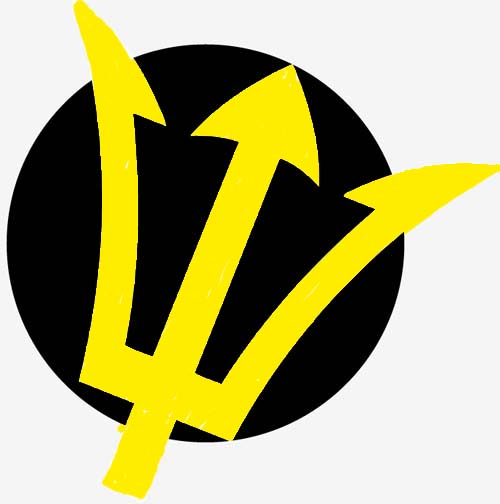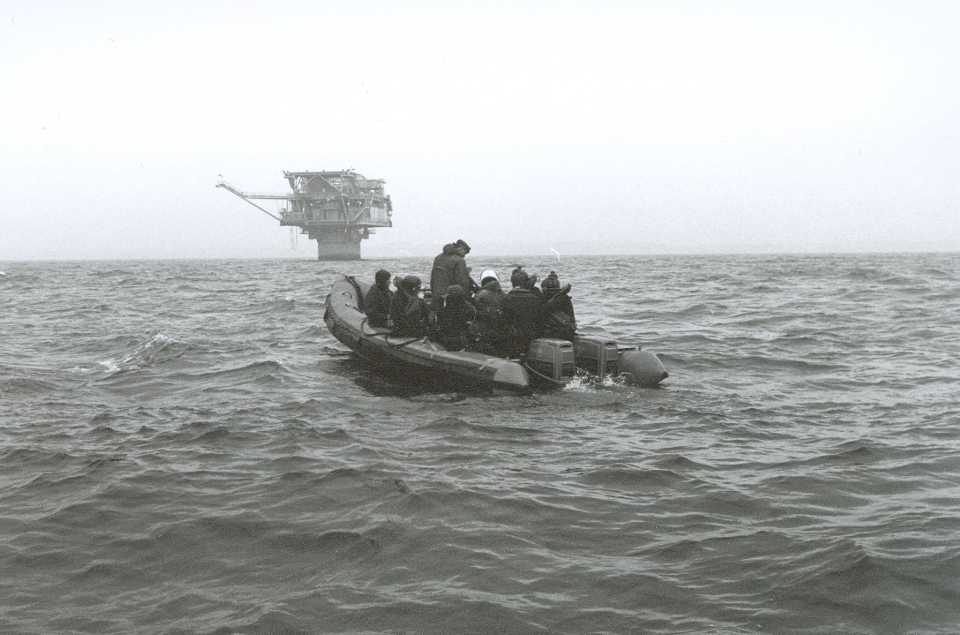
The Kampfschwimmer Company and the beachmaster company were both assigned to and integrated into the newly established Maritime Battalion (Seebataillon) on 16 December 1988. (The original Seebataillon had been disbanded in the 1960s.)
On 1 April 1989 the Company celebrated its 25th anniversary. Six months before the fall of the Berlin Wall and the events which would lead to German reunification.
In the course of the 1980s the Kampfschwimmer received a clearly defined operational wartime mandate within German strategic naval planning. The Company was to provide forces which would, while acting independently, make a major contribution to wartime fleet defense. By conducting reconnaissance missions (including missions deep behind enemy lines) to provide actionable intelligence, and by disrupting or neutralizing threats or potential threats to the fleet, they were to buy time for the conventional German armed forces to conduct their own operations. The Kampschwimmer demonstrated their versatility and proved that they could fulfill the operational spectrum demanded of them. The naval commandos certified for missions on and below the water, on beaches and in coastal territory as well as deep inland (including mountains and inhospitable terrain) and from the air. Desperately needed new equipment was procured, including speedboats and special weapons, which led to a significant improvement in capabilities. This decade also was the first era in which all authorized personnel slots in the Kampfschwimmer company were actually filled. The unit went on to further enhance its capabilities spectrum by adding combat boarding of ships and oil platforms, and by training on special rescue and salvage techniques. The increasing international cooperation provided opportunities for training in various climatic zones. By the end of the decade the Kampfschwimmer were ready for a new era which would be dominated by crisis- and conflict-management.
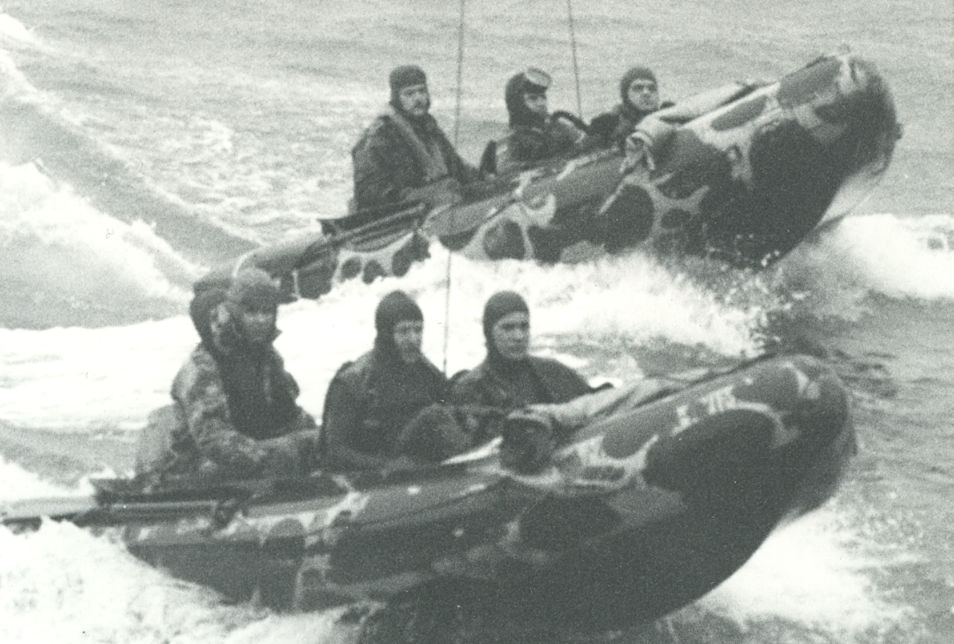
The 1970s would be a decade marked by terrorism, and this would have great significance for the Kampfschwimmer Company.
On 5 September 1972, eight members of the Palestinian terrorist organization Black September entered the Olympic Village in Munich. They took eleven hostages. All hostages died during the course of a rescue attempt by the Bavarian police. Three of the terrorists survived and were taken into custody. On 26 September 1972, just 21 days after the events in Munich, the second German special operations force was founded: Grenzschutzgruppe 9 (Border Security Forces Group 9), abbreviated as GSG9. [The paramilitary Border Security Forces are an arm of the German Interior Ministry. They are classified as a federal law enforcement agency. Therefore GSG9 is authorized to operate domestically, while the Kampfschwimmer and other military units are prohibited from conducting armed missions on German soil.]
Some time after GSG9 was formed a BGS delegation, including the unit’s first commander, BGS Lt. Col. Ulrich Wegener, visited the Kampfschwimmer Company for orientation. They enquired about missions, equipment and tactics. Wegener wanted to include a maritime component in GSG9. The Kampfschwimmer Company provided significant support for the development of GSG9’s amphibious platoon. Ever since, GSG9 sends members to the Kampfschwimmer training center in Eckernförde every year to receive tactical dive training. At least once a year GSG9 and the Kampfschwimmer Company conduct a joint anti-terrorism exercise on the water. The administrative basis for this cooperation was laid in 1980 when the Interior Minister and the Defense Minister agreed that their respective ministries would provide one another with training and materiel support.
Another event would provide a significant impetus to the naval commando unit’s development. The German fleet commander spent an entire day visiting the Kampfschwimmer Company to get a complete picture of their capabilities (NATO had requested information from the German navy regarding the Kampfschwimmers’ operational capabilities). As a result, the German naval commandos began to participate more intensively in NATO exercises. Frequent training partners were the Danish, British and French counterparts. Increasingly, the Kampfschwimmer also participated in joint training with the US Army’s 10th Special Force Group stationed in Bad Tölz in southern Germany, and especially with the US Navy SEALs, who maintained a detachment on Crete.
The Germans profited greatly from the Americans’ experience in combined land operations, i.e. approaching from the sea or per river in order to conduct operations on land, as was practiced in Vietnam. The first SEALs visited Eckernförde/Carlshöhe in 1973. One of these was Pete Wikul who retired from active duty in 2009 as a Navy Captain. The SEALs, for their part, were most interested on training for tactical underwater operations, which they had neglected during the Vietnam War. The US naval commandos were very impressed by the German LAR II rebreather system produced by Dräger. As a result both SEAL teams were equipped with the device. A Personnel Exchange Program with SEAL Team 2 was initiated In 1975. It is still in effect today. In addition, SEAL Teams and Special Boat Teams visit Eckernförde at least once a year.
Needing more space, the Company relocated from the Carlshöhe Kaserne into the 1960’s era Eckernförde-Nord Kaserne on 1 October 1974. In their new building the Company was able to add a training platoon, while the command section added a physician and a parachute rigger. With this reorganization the company became fully responsible for training new naval commandos. This was facilitated by the construction of a new indoor dive-training facility which enabled co-location of the entire unit and its functions at one base. The mission was also redefined and clarified to include: commando operations against ships, docks, harbor facilities, locks, etc., when tactically significant for the Navy; beach reconnaissance, including inland reconnaissance; special combat operations above and below water and on land.
The 1970s were a decade of reorientation for the Company. Mastering land combat techniques set the stage for a new, more active role within the German Navy’s operational planning. The Kampfschwimmer were designated as an “instrument of naval warfare”; in that capacity they were to receive offensive missions. The mission profile, organization and capabilities were modified to meet the demands of modern Special Operations Forces. The fleet had finally taken note of the Kampfschwimmer, who were now to be employed as an offensive naval arm. The Comany was assigned wartime targets in case of an East-West confrontation. For the most part these targets were located on the territory of the former GDR (German Democratic Republic or “East Germany”). The Kampfschwimmer were tasked with missions which required on-the-spot assessment by the operators (otherwise a fighter-bomber could have achieved the same results). The designated targets lay up to 30 kilometers inland, which had to be traversed covertly.
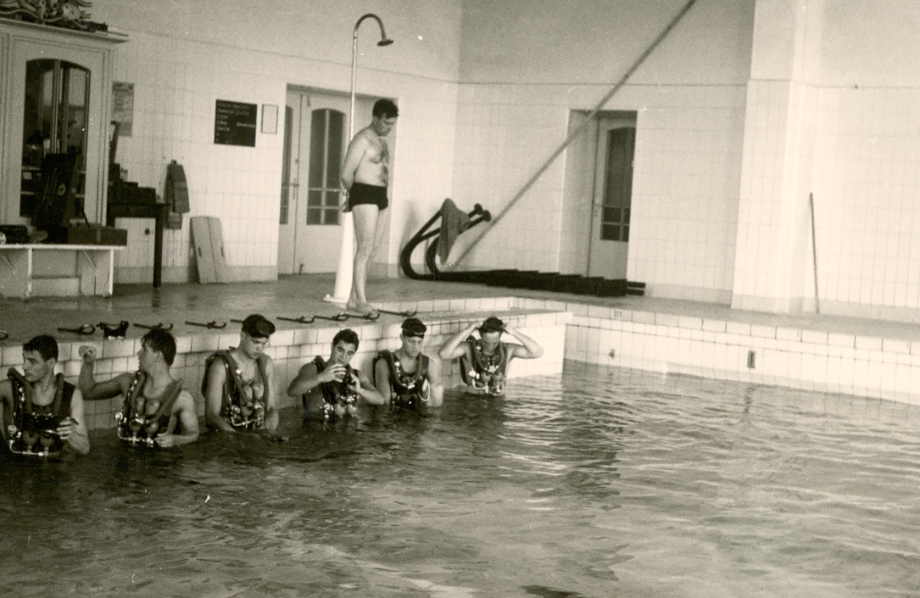
On 1 July 1963 the Kampfschwimmer platoon was relocated as a detached unit from Borkum to the Carlshöhe naval barracks (Carlshöhe Kaserne) in the town of Eckernförde on the Baltic Sea. Commander at this time was Oberleutnant zur See (O-2, equivalent to US Navy Lt. j.g.) Bernd Kielow. The Naval Chief of Staff’s official Order Nr. 124 dated 1 April 1964 elevated the unit to the status of an independent company. The new Kampfschwimmer Company was placed directly under the administrative and operational command of the Amphibious Forces Command (Kommando der amphibischen Streitkräfte).
Order 124 defined the unit’s primary missions as:
a) commando operations against ships, docks, harbor installations, locks etc.;
b) beach reconnaissance;
c) “special missions”.
Secondary responsibilities were defined as:
a)conducting the final phase of Kampfschwimmer training;
b) readiness training both for commando personnel assigned to the company and for commando-qualified personnel assigned elsewhere.
Kapitänleutnant Günter Heyden was assigned as the company’s first commander. The company was divided into the command element and three Kampfschwimmer platoons (one heavy platoon, one light platoon and one specializing in beach reconnaissance).
On 1 October 1969 the “Amphibious Group” headquartered at Emden was redesignated the Amphibious Transport Group, but this had no effect on the Kampfschwimmer Company.
Kapitänleutnant Völsch continued to lead training of new naval commandos until 1967. Indoor training was conducted in List on the island of Sylt; open water training was conducted in Eckenförde and Olpenitz. Ranger, airborne and airmobile training courses were conducted at the airborne/airmobile school in Altenstadt. Demolitions training was conducted at the navy’s underwater weapons school. Additional instructors were regularly detached from the operational Kampfschwimmer Company in order to match the training to specific real-world requirements. One of the new company’s biggest concerns at this time was equipment acquisition. For example, finding the best rebreather system. At first the unit used the Dräger Lt.-Lund-II oxygen rebreather. The counterlung was made of waterproof canvas cloth. It was found to be vulnerable and was replaced in 1966 with the Lung-Automatic Rebreather (LAR) II. This encapsulated device, also made by Dräger, is worn across the chest. This qualitative upgrade animated foreign units to also acquire the LAR II.
The Company spent much time training and participating in exercises. One particular exercise designated Hopping Crocodile or HOP CROC deserves mention here. It was a triphibian (combined sea-air-land) exercise conducted before the eyes of astonished army officers in the training grounds near Varrelbusch. Thirty members of the Kampfschwimmer Company performed a twilight jump from a Noratlas transport plane, landed in the coastal waters and infiltrated the shoreline. On the third day of the exercise they conducted a surprise underwater attack on the reserve fleet tied up in Wilhelmshafen. Their success was noted! In the years to come the naval commandos would conduct raids on numerous sensitive facilities of the German armed forces, motivating the military to increase installation security.
Military innovation was ot restricted to Europe during the 1960s. John F. Kennedy ordered a reorganization of the United States military. This led, among other things, to the founding of the US Navy SEALs. SEAL is the acronym for Sea-Air-Land, and describe the SEALs’ operational environment. Much thought and planning went into creating the SEALs. Their baptism of fire came soon: the Vietnam War.
The German Kampfschwimmer’s operational concept was also no longer restricted to purely aquatic missions. Rather, the element of water became a conduit for covert approach, in order to conduct subsequent combat missions on land. The element of air was also included, and parachute techniques were developed to ensure safe delivery of personnel. The Kampfschwimmer became a triphibian warrior at home on and in the sea, in the air and on land. Even today the naval commandos enjoy the most broad-based training spectrum of any combat unit within the German armed forces. By the early 1970s the Kampfschwimmer’s new concept of operations had already formed the basis for their future allocation to the Special Operations Command.
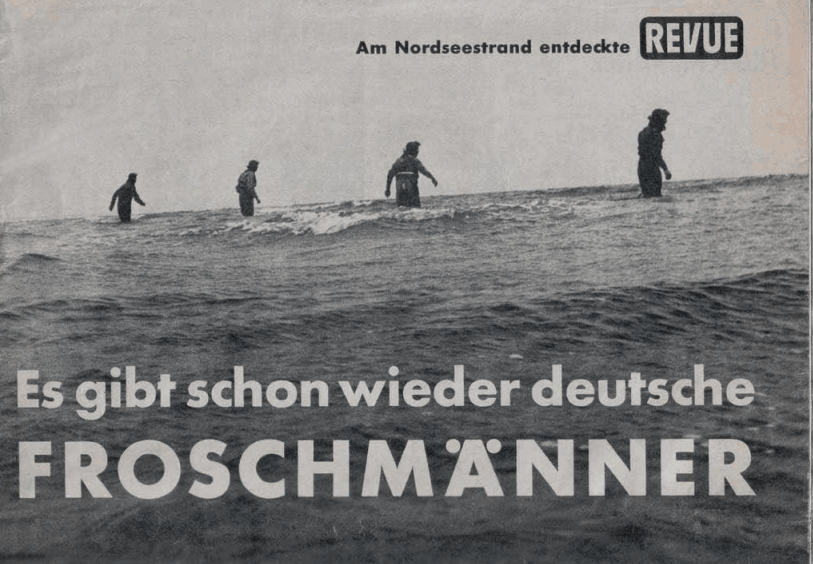
The Federal Republic of Germany (FRG) was founded on 23 May 1949 out of what had been the three western zones of occupation. The new federal government soon came under increasing pressure to rearm. The catalyst was a conflict taking place 15,000 kilometers southeast of German territory: the Korean War.
The Western powers realized that a major West German contribution to the common defense of Europe – over and above its role as a host for allied armed forces – was needed. Following secret consultations with the FRG’s Chancellor (head of government) Konrad Adenauer – and acting under his direction – 15 former officers of the wartime German armed forces met in a small monastery in the Eiffel mountains. Among the officers meeting at the Himmerod monastery was Vice Admiral Heye (who would later serve as the armed forces ombudsman of the German parliament). The result of this four-day meeting (5-9 October 1950) was the so-called Himmerod Memorandum. It would serve as the basis for Germany’s postwar rearmament and for the development of the postwar West German armed forces, the Bundeswehr (“Federal Defense Forces”), which formally began in 1955 after the Federal Republic of Germany’s accession to NATO.
On 23 October 1954 the Federal Republic of Germany was formally invited to join the North Atlantic Treaty Organisation; accession as a full member was accomplished on 6 May 1955. The FRG’s armed forces (Bundeswehr – Federal Defense Force) were formally established on 12 November 1955. The FRG’s navy (Bundesmarine) was established on 2 January 1956 and initially equipped with ships and boats from the Labor Service Unit.
Despite being one element of a greater allied “Atlantic navy”, the West German navy’s area of operations was clearly envisioned as being restricted to the North Sea and Baltic Sea. This vision then defined the navy’s organization and resource allocation. The Bundesmarine was specifically conceptualized to support allied operations and strategy. Its core strategic mission was centered on the Baltic and included both defensive and offensive operations, including amphibious landings to the rear of a potential Russian front. Admiral Heye emphasized the necessity for amphibious landings and commando operations. These operations had two goals: preventing enemy troops from landing on the coast in order to secure their own army flanks; and “conducting commando operations and landings deep behind the Russian front, to bind enemy forces and create uncertainty”. (Peter Monte, Die Rolle der Marine in der Verteidigungsplanung für Mittel- und Nordeuropa von den 50er Jahren bis zur Wende 1989/90) This line of planing would open a new chapter in German naval history: amphibious operations.
As in all service branches of the Bundeswehr, the founding members of the postwar navy were veterans of the wartime armed forces. Everyone assigned to a supervisory or command position had to undergo a strict vetting process. Those found innocent of war crimes or other wrongdoing could be accepted into the Bundeswehr. Some German politicians voiced doubts about accepting wartime personnel into the new armed forces. Chancellor Adenauer replied that NATO would not accept 18-year-old German generals.
The Amphibious Forces Command (Kommando der Amphibischen Streitkräfte) was established in Wilhelmshafen to create the requisite command structure for amphibious operations. In 1959 the Naval Combat Engineer Battalion (Marinepionierbataillon) was renamed Maritime Battalion (Seebataillon). It consisted of a boat company, a beachmaster company, a combat engineer company, and a command and support company.
In the course of developing amphibious capabilities the naval leadership realized that a Kampfschwimmer unit would also be required. At the time in question every NATO navy with amphibious forces also had a naval commando unit. But the knowledge required for developing such a unit was virtually non-existent in the new German navy. Moreover, the German armed forces had missed out on the preceding ten years worth of military developments. So how could the skills be acquired?
Requests for assistance in standing up a naval commando unit were made to various NATO partners, and France offered to help. Why France?
“Following WWII the French had systematically pursued modernization of naval commando equipment and tactics. The French underwater warfare laboratory led by Jacques Cousteau developed improved diving equipment optimized for military operations. So where does a developed system prove itself? The French found their opportunity in the Indochina War. The experience fained in this war shaped the Nageur de Combat [‘Combat Swimmer’] who did not have much left in common with the combat swimmers of World War II. Back then, the combat swimmer’s field of operation lay exclusively in the water, but now he also went ashore and continued his mission there.” [Kapitänleutnant (Lieutenant) (ret.) Ulrich Wolfgang Sassen in a lecture titled: Kampfschwimmereinsätze in der Vergangenheit – Erfolge in der Zukunft (Naval Commando Missions of the Past – Success in the Future) .
The cadre personnel of the new German Kampfschwimmer unit attended a six-month training program at the French naval commando school in St. Mandrier in the south of France from January to July 1959. This initial cadre consisted of only two men, both veterans of the WWII Kampfschwimmer unit: Kapitänleutnant (O-3, Lieutenant) Günter Heyden and Maat (Petty Officer) Fred Langhans. Following procurement of equipment for the new unit, the German Navy was ready to begin its own training program in Germany,on the North Sea island of Sylt.
The first postwar Kampfschwimmer training course began on 1 July 1959 under supervision of Kapitänleutnant Herbert Völsch (known to his men as “Papa Völsch”) and Oberbootsmann (Chief Petty Officer) Walter Prasse. The initial class consisted of 13 hand-picked trainees, including three petty officers and ten seamen. “One month later the first Kampfschwimmer platoon was activated and assigned to the Seebataillon in Sengwarden, with detachments at Eckernförde and Borkum.” (Froschmänner, Eric Micheletti).
At this point the platoon’s primary capabilities spectrum was still restricted to maritime special reconnaissance. The Kampfschwimmer platoon was integrated into the Seebataillon’s Beachmaster Company, where it practiced and supported amphibious landings by conducting underwater situational reconnaissance and beach reconnaissance, and by assuming some beachmaster functions. The naval commandos trained hard to master their new responsibilities, and soon became a dependable instrument of the amphibious forces. Independent combat operations by the commandos were not envisioned at this point. Their focus was squarely on laying the groundwork for amphibious landing operations.
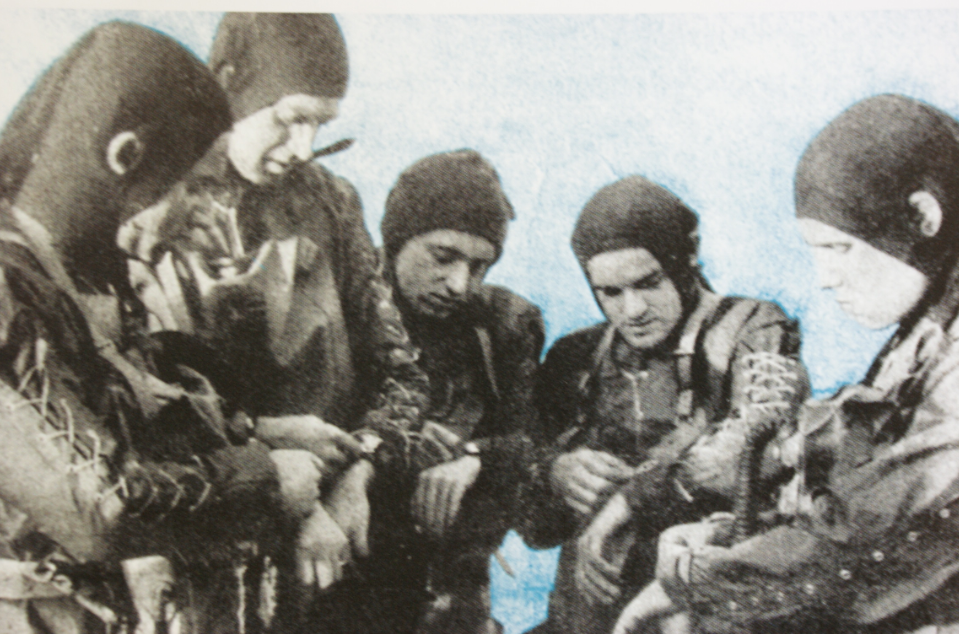
Formation and training of a Kampfschwimmer unit during World War II was an act of despair. For years the German war machine, with its ultra-modern heavy weapon systems and cutting edge equipment, had enjoyed an unbroken record of success. This provided the proponents of conventional warfare who dominated the command staff no incentive for standing up naval commando forces. As the Allied vanguard moved closer to the Third Reich’s borders during the final third of the war it became obvious that Germany was under considerable strategic pressure. Human and material resources also began to get scarce. These factors combined changed the military leaders’ mind regarding the need for naval commandos. The navy’s Kleinkampfmittelverbände or “K-Units” were formed. This term is frequently translated as “small combat units”, although “asymmetric combat units” may be more accurate given their raison d’etre and tactics. Kampfschwimmer were integrated into the K-Units. Like the German army’s “Brandenburger” commando units, the K-Units would prove to be highly mobile and formidable opponents for the anti-Hitler coalition’s armed forces.
Following the example of the British Royal Navy’s X-Craft, the K-Units deployed manned torpedoes as well as mini-submarines armed with torpedoes. The main combat element of these units consisted of “Neger” and “Mader” type manned torpedoes as well as “Biber” and “Seehund” type mini-subs. They also employed explosives-filled motorboats. The pilot would aim his boat at a target vessel, fix the steering wheel, then jump overboard while the boat raced on to impact. Kampfschwimmer formed the smallest element of the K-Units.
The first Kampfschwimmer training course was conducted in late 1943 by the military intelligence office in Hamburg. The resulting unit was a pure Kampfschwimmer unit with the official designation Marineeinsatzkommando (Maritime Task Force) or MEK. The first thirty trainees were volunteers including experienced and highly qualified soldiers the the Brandenburger’s coastal ranger division. The MEK was divided into two companies designated “Marco” and “Marei”. The primary mission consisted of attaching mines to ships, bridges and locks.
With formation of the K-Units (the designation became official on 20 April 1944) the MEK units were consolidated and transferred from military intelligence to the navy, which assumed control over all maritime special missions. RearAdmiral Helmuth Heye was appointed commander of the naval special operations command. Admiral Heye had served as a submarine officer during WW I, and commanded the armored cruiser ADMIRAL HIPPER when WW II broke out. After the war he would contribute to the Himmerod Memorandum (which would serve as the basis for Germany’s postwar rearmament), and later serve (1961-1964) as defense ombudsman for the German parliament.
The first Kampfschwimmer training under auspices of the navy did not take place until 1944. Olympic athletes and other record-breaking sportsmen were among the first trainees. Prior to being assigned to Kampfschwimmer training these sailors had been conducting athletic training in Kiel; their public workouts were intended as a recruiting tool for the navy. The first Kampfschwimmer training took place in the small town of Valdagno in Italy’s Appenine mountains. It boasted a modern pool and Olympic quality athletic facilities. These facilities were also used by the Italian naval commandos (Decima MAS or 10th Fast Boat Flotilla). Following initial training at Valdagno the sailors transferred to the island of Alga in Venice lagoon for advanced training.
Training was closely patterned on that of the British commandos who operated behind enemy lines. Comprehensive, high-quality training was achieved by seconding frontline-seasoned infantry and combat engineers as instructors. A premium was placed on athletic conditioning, and every trainee had to master hand-to-hand combat, writes Cajus Becker in his book Einzelkämpfer auf See (“Solo Warriors at Sea”). The primary offensive arm were the so-called “exploding fish”, tubes filled with 7.5 kilos of explosives. They were equipped with time-delayed or remote-controlled fuzes. Other equipment included Dräger dive tanks, rubber suits, dive watches, compass, fins or lead shoes. The first 30 graduates were ready for duty by June 1944.
The third training location was the SS Junkerschule (Officers’ Training School) in Bad Tölz. To maintain secrecy the naval volunteers were trained at the facilities pool complex between 10 PM and 6 AM. The SS attempted to have these men – and eventually all Kampfschwimmer – placed under their control, but the Naval High Command (essentially Admiral Heye) was able to prevent this. Once trained, the Kampfschwimmer were transferred out of Bad Tölz.
The Kampfschwimmers greatest success during WW II lay not in missions against Allied ships at sea or in harbor. but in riverine operations to sabotage bridges. For example, in September 1944 they destroyed the Ally-occupied bridges over the Orne and the Orne Canal (located six kilometers north of Caen), a bridge over the Waal near Nijmegen, and a pontoon bridge across the Oder. They also put the port of Antwerp out of operation for three months bei blowing up a lock gate of the Kreuzschanz-Locks. A total of 450 men trained as Kampfschwimmer between 1943 and 1945, but only sixty ever qualified as operational.
